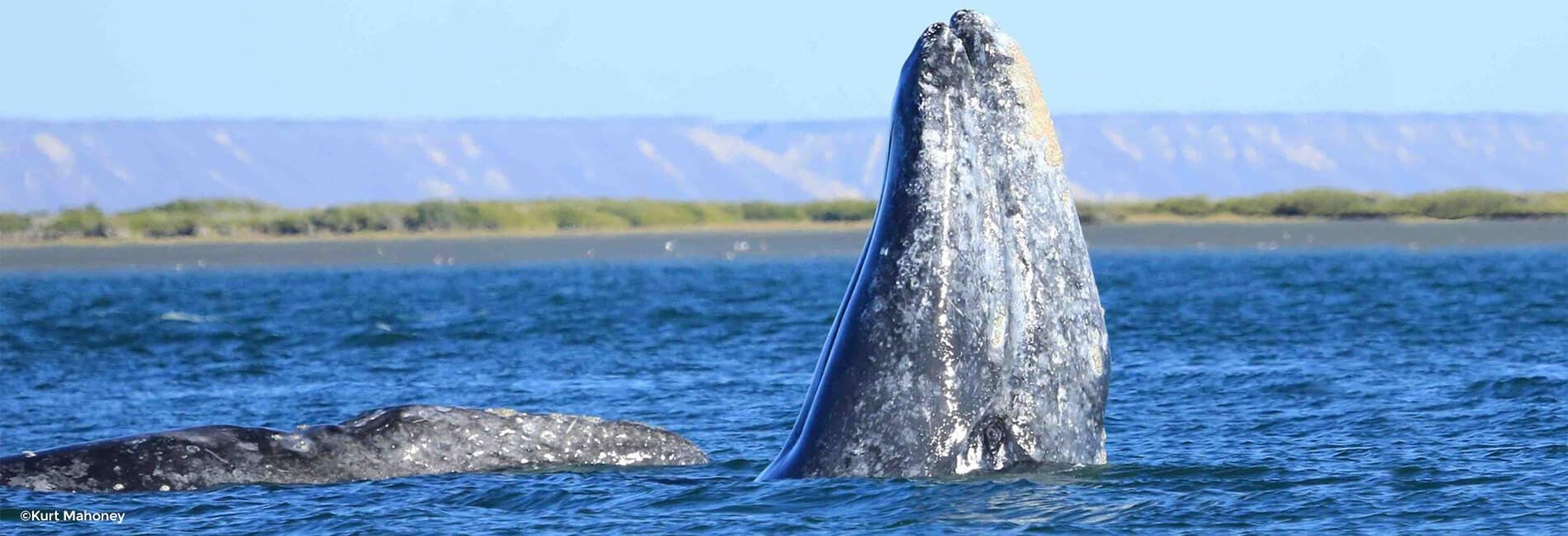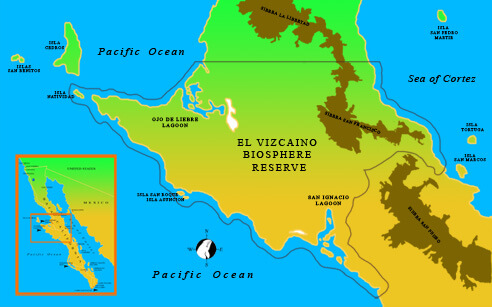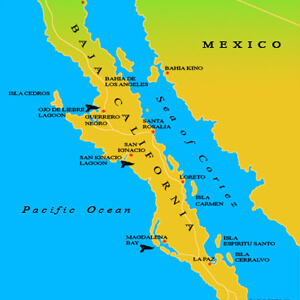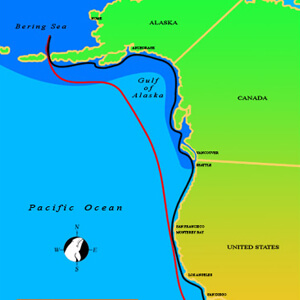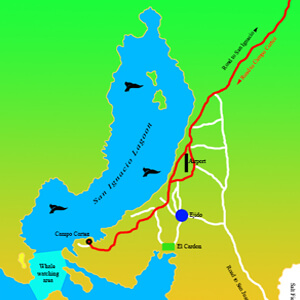Map of the Vizcaino Biosphere Reserve
Mexico’s Premier Wildlife Refuge in Baja Sur
Located at the center of the Baja peninsula between the Pacific Ocean and Sea of Cortez lies Mexico’s most dramatic and diverse wildlife refuge. It is called El Vizcaino Biosphere Reserve and it is one of Mexico’s most recent additions to a growing collection of wildlife and protected zones. Declared a national biosphere in 1988, El Vizcaino has a landmass of over 2.5 million hectares (143,600 square km) it is the largest wildlife refuge in all of Latin America and certainly the most diverse.
Vizcaino Biosphere Reserve Facts
- Largest wildlife refuge in Latin America
- Breeding and Mating Sanctuary for Pacific Gray Whales
- United Nations World Heritage Site
- Over two and a half million hectares
- 10,000 year old cave paintings and Petroglyphs
- 17th century missions
- Over 500,000 migratory birds winter in coastal Pacific region
- Least populated region in Mexico: less than one person per 2km
First Inhabitants
This region was first inhabited over 11 thousand years ago by the Cochimi, nomads who came from the north of the American continent. These nomadic wanderers lived in the protection of caves in the Sierra San Francisco Mountain range where cave art can still be seen by travelers making the trek into this mountainous region.
Unique only to Baja
The animals and plants of this territory have adapted themselves to the region’s extreme desert conditions with little rainfall, intense winds and an ecosystem which has produced thousands of endemic species of plants and animal life found nowhere else in the world but Baja.
Animals of the Baja
Animals that have adapted to these extreme conditions include a variety of nocturnals such as coyotes, rodents, and hares; others have adapted to only ingesting water from succulents. Outstanding among the mammals is the pronghorn antelope, one of the swiftest mammals on Earth. In this region can be found the last populations of Antilocapra Americana Peninsularis, an endemic subspecies of the pronghorn. The Vizcaino is also the habitat of the desert bighorn sheep, the mule deer, dozens of resident and migratory birds - being of special importance the ospreys, cormorants, herons, and gulls—and four species of sea turtles. On the coastline and islets there are many marine mammals, such as elephant seals and sea lions.
Gray Whale Sanctuary
What is most spectacular, what gives this region uniqueness found nowhere else on this planet, is that it is the birthplace of the Pacific Gray Whale commonly known as the California Gray Whale. Every winter, thousands of Gray Whales migrate from their feeding grounds in the Bearing and Chukchi Seas to the warm water lagoons of San Ignacio and Ojo de Liebre and Magdalena Bay to mate and bear their young as they have done for thousands of generations.
United Nations World Heritage Site
Inscribed on the World Heritage List in 1993: Because of its uniqueness and importance to the world community, UNESCO, the United Nations Educational, Scientific and Cultural Organization has designated the breeding and calving lagoon of San Ignacio as well as the cave paintings of the Sierra San Francisco as World Heritage sites.
UN site: http://whc.unesco.org/en/list/554



